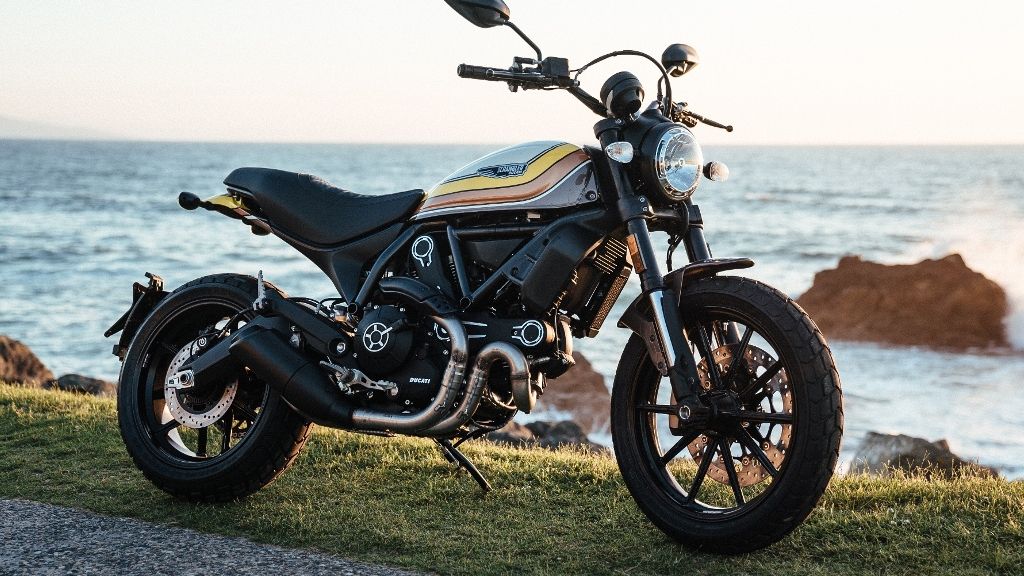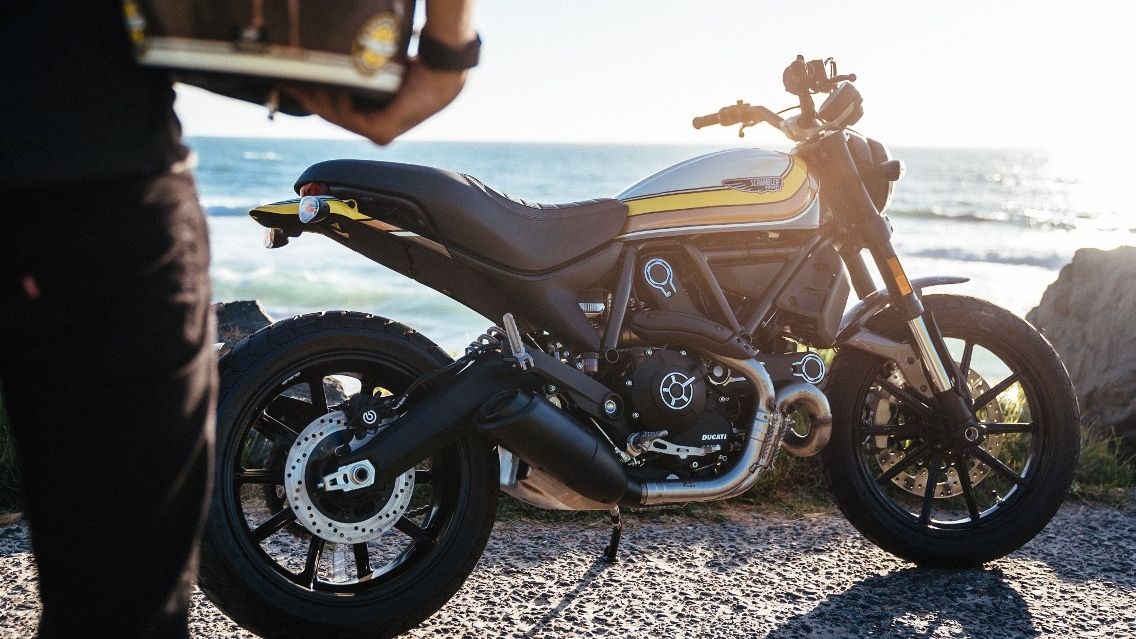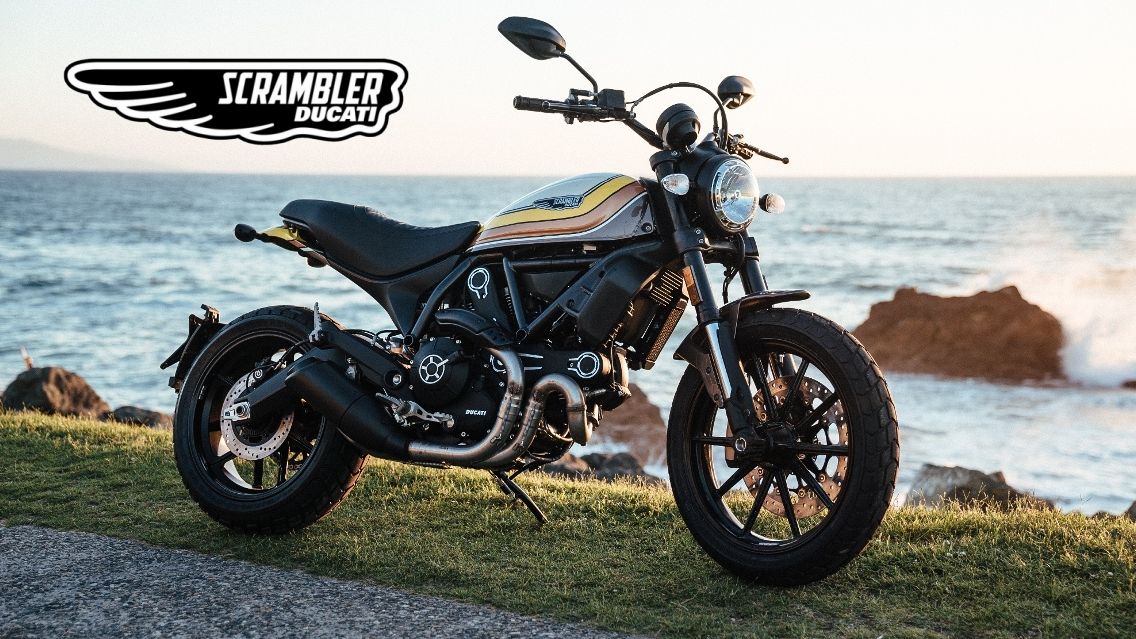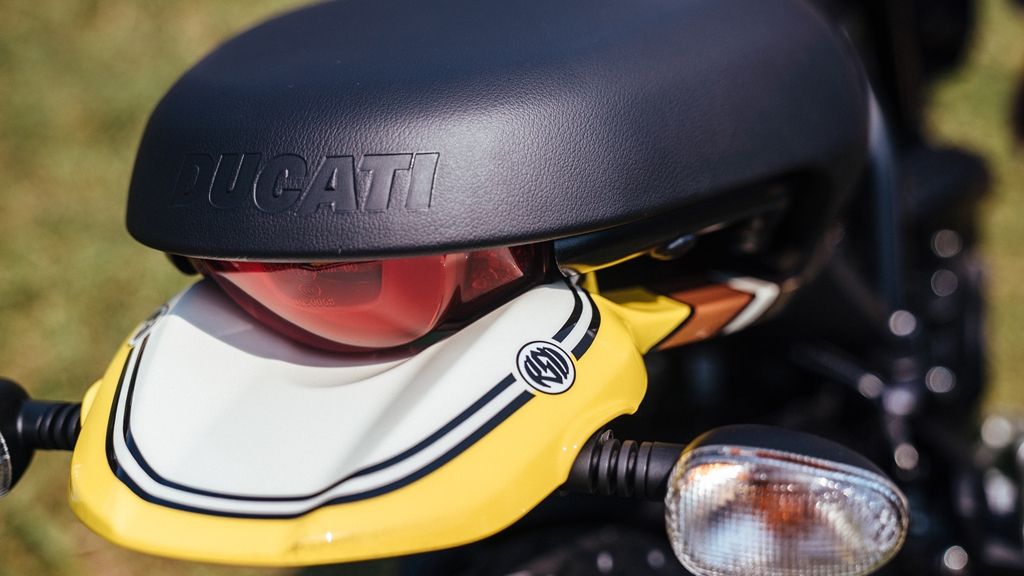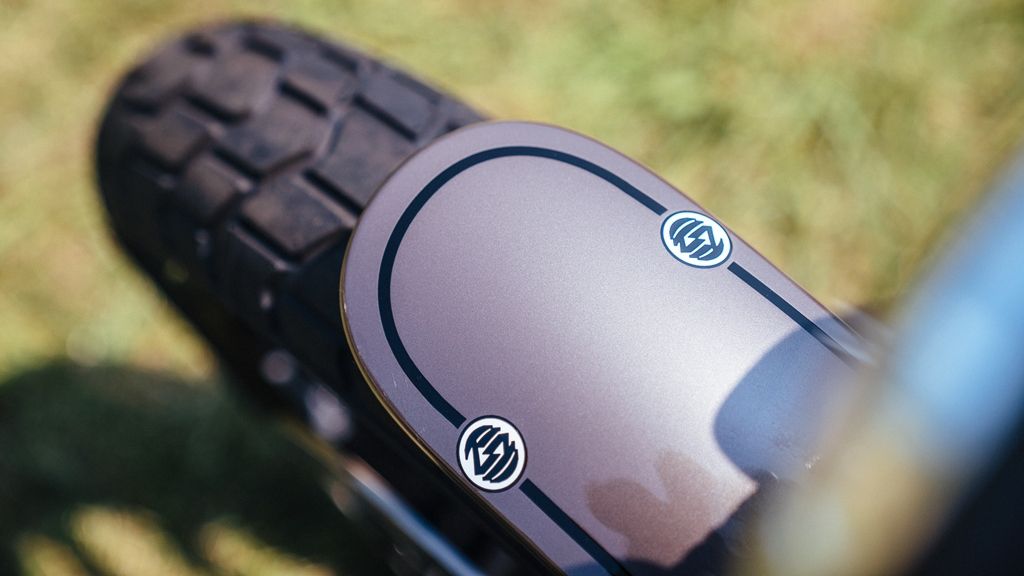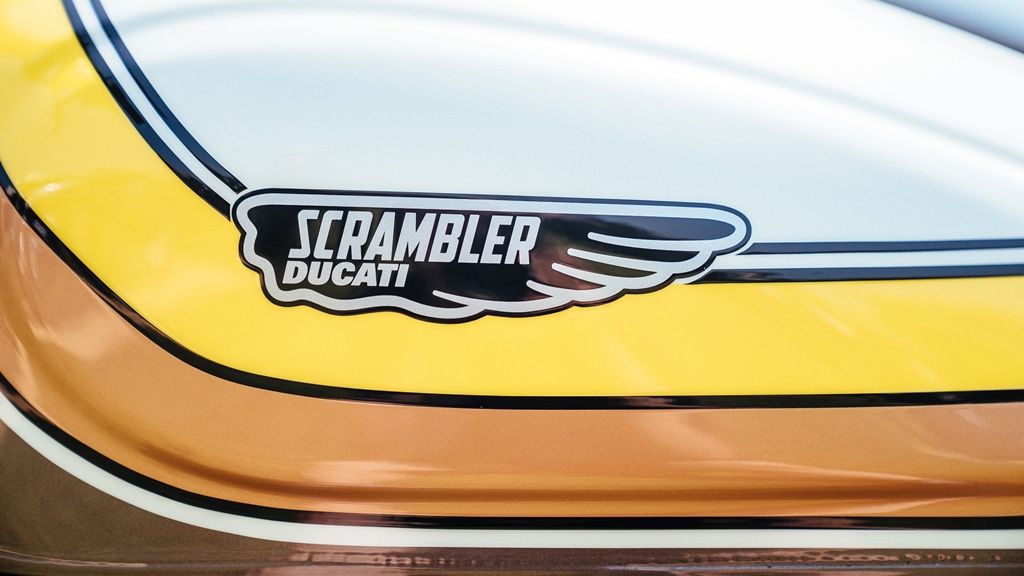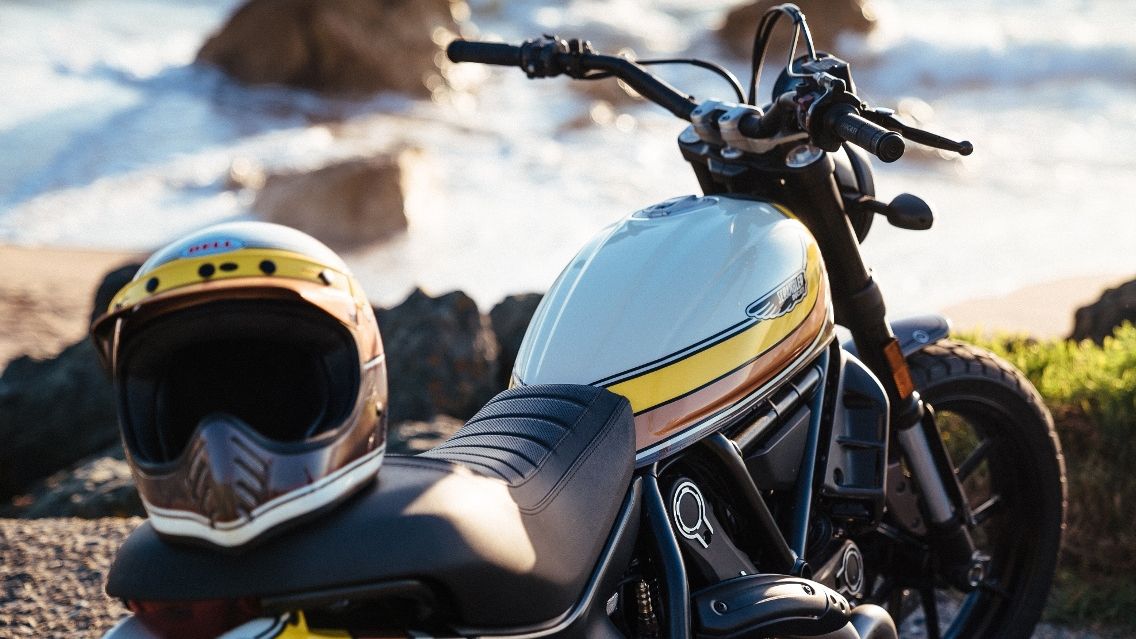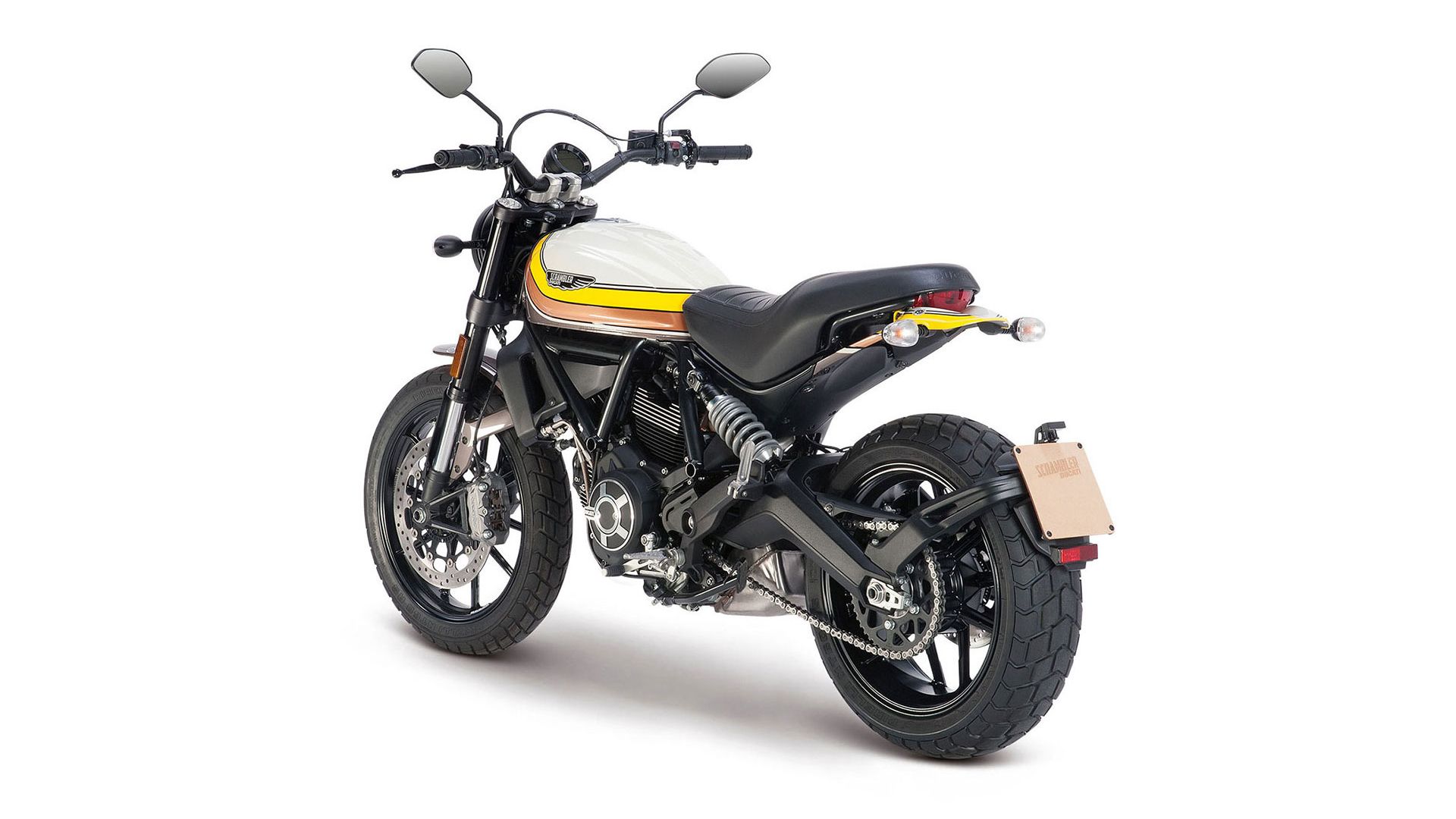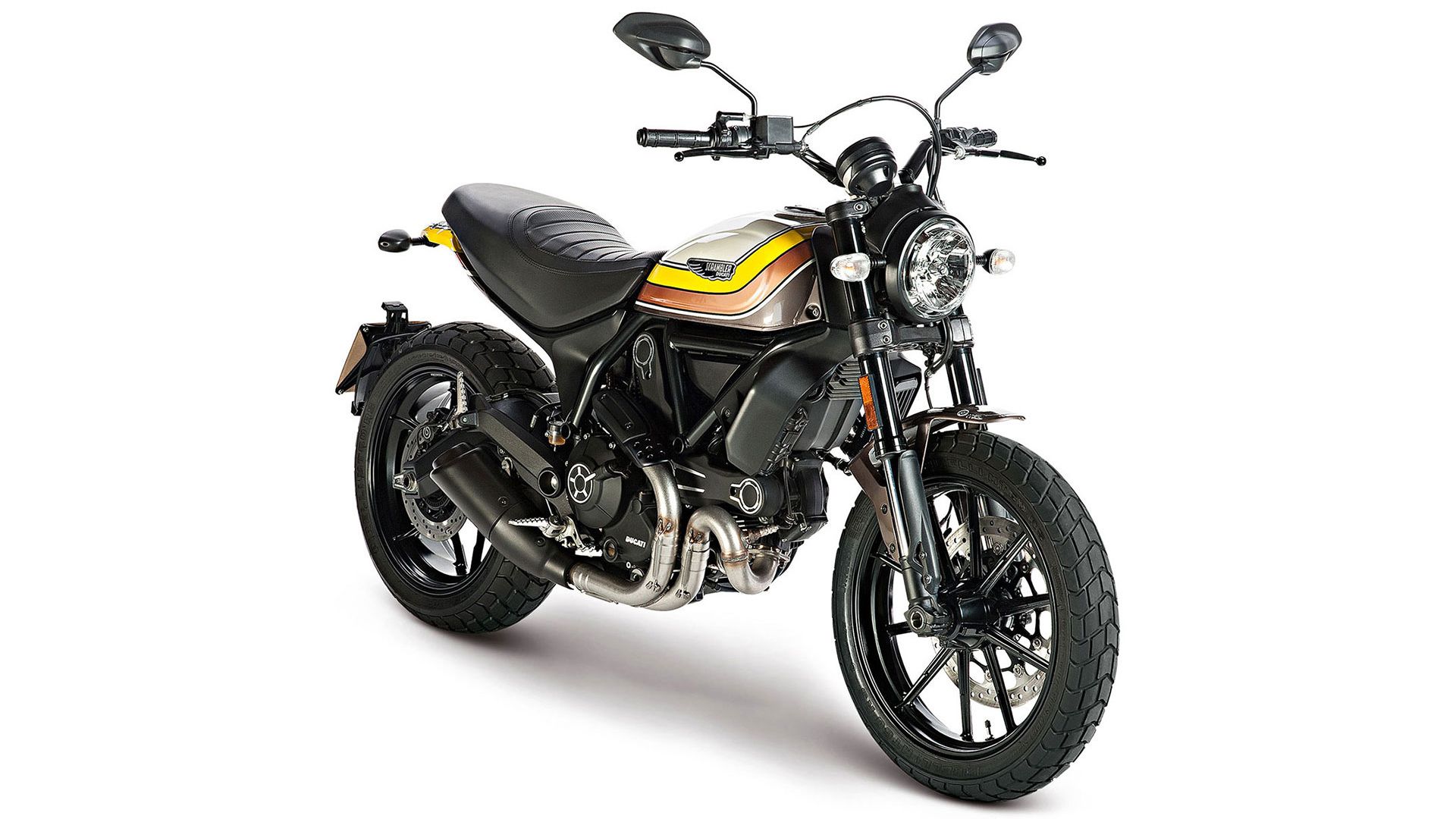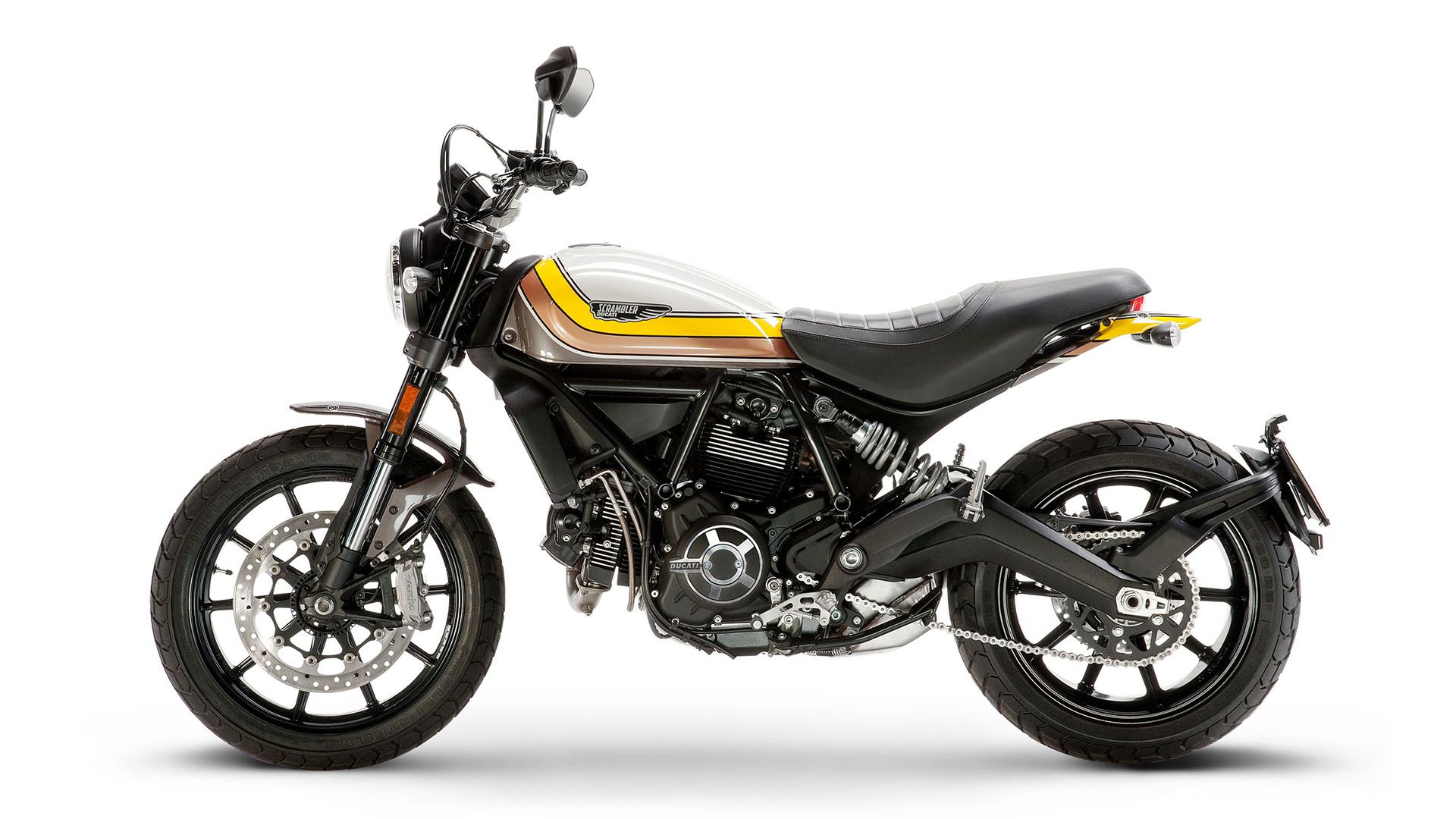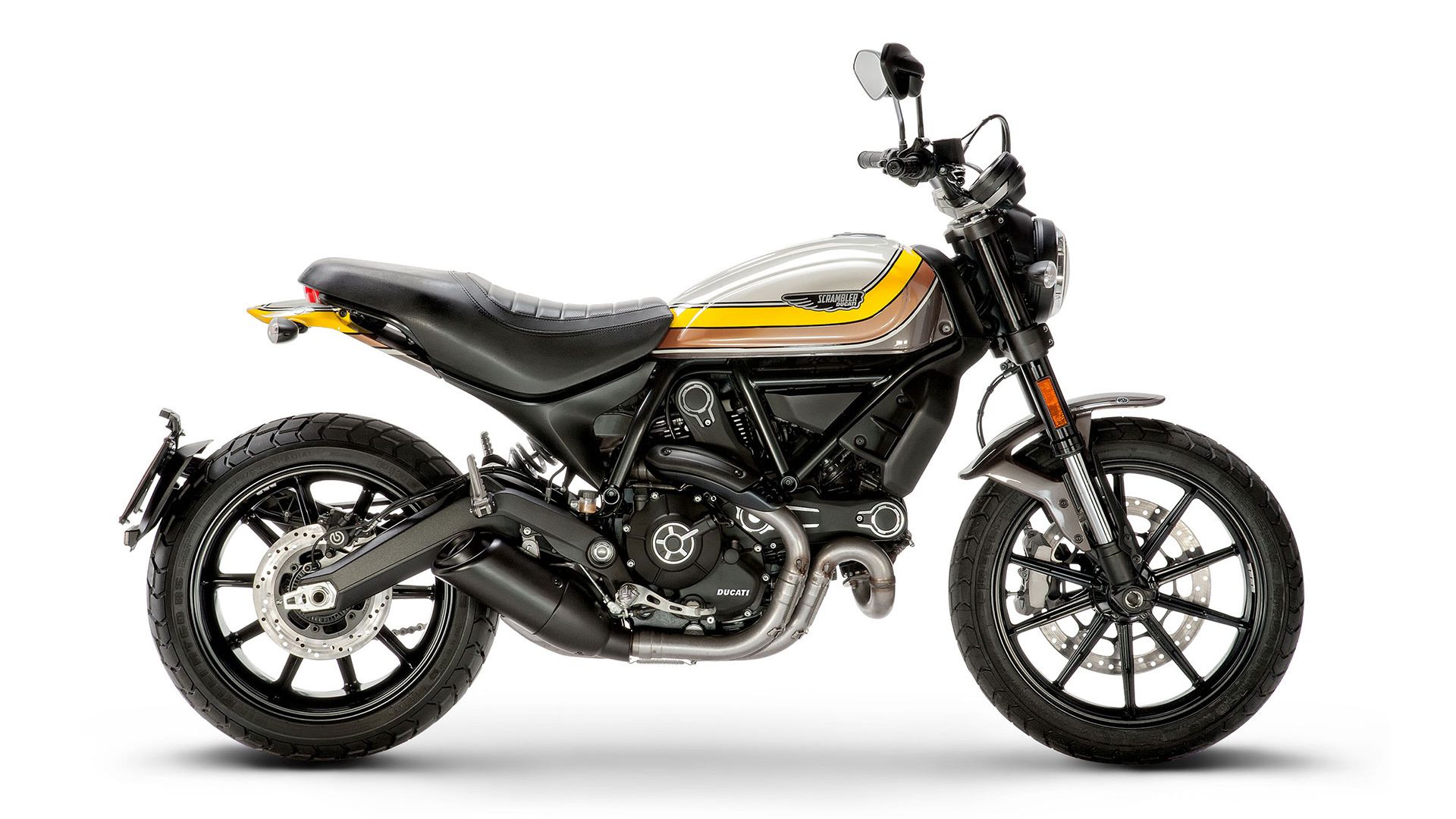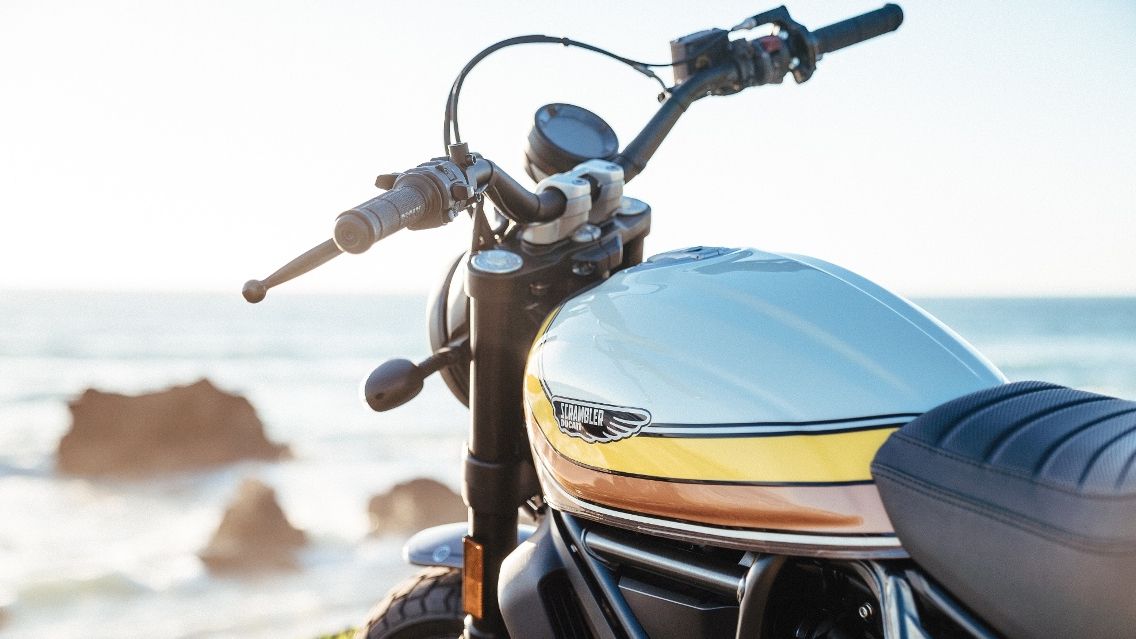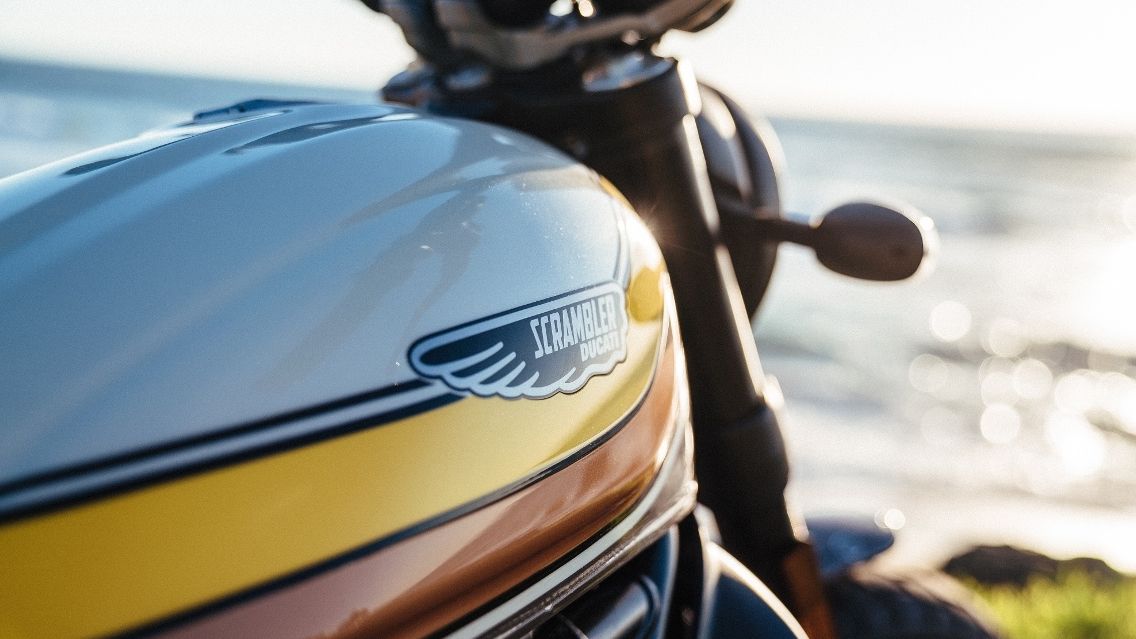Ducati made some adjustments to its Scrambler lineup this year. The “Mach 2.0” moves in to help fill the void left by the departure of the Flat Track Pro and Urban Enduro but creates a niche of its own with a particularly nostalgia-inducing look meant to call to mind the 70s on the West Coast. Roland Sands Design in Los Angeles, California, drew on its vast experience as a custom bike builder on that very coast to dream up this variant on the Scrambler theme at Ducati's request, and the result is 'pretty cool, man.' The differences between the Scramblers can be subtle, though noticeable; but today I'm going to take a look at the Mach 2.0 and see what RSD switched up to set this ride apart from the rest of the range.
Continue reading for my review of the Ducati Scrambler Mach 2.0.
2018 Ducati Scrambler Mach 2.0
- Make: Array
- Model: 2018 Ducati Scrambler Mach 2.0
- Engine/Motor: L-Twin
- [do not use] Vehicle Model: Array
Design
Right. It's a Scrambler. We've got the seat from the discontinued Flat Track Pro with a large influence from the Icon that served as the base model. The Mach leads the way with the same chopped-and-bobbed front fender as the Full Throttle and the Cafe' Racer, and shares blacked-out usd front forks with the rest of the family. A blackout tripleclamp, headlight can, mirrors, turn signals and instrument housing keeps the front-end clean with a tapered motocross-style handlebar that serves as the first clue as to the inspiration for this ride.
While there have been helmets designed around bikes before, I think this is the first time I've heard of a bike built around a particular helmet. You see, back in the 70's the designers at Bell produced the “Ducati Scrambler Cross” helmet, and this MX-style bucket came with a distinctive brown/orange/yellow motif that makes an appearance on the steel fuel tank and rear fender of the Mach 2.0. The very name is a nod to the Ducati Mach 1 250 circa 1965, so this ride has the retro vibe coming and going.
A rather low-profile fuel tank and nearly-straight bench seat gives the Mach a relatively flat top line in profile, but the seat itself carries just a hint of a buttcup at the break between pillion and rider. Personally me, I think a proper tuck-and-roll bench would be the way to go, but RSD didn't exactly call for my input on it so here we are.
As with the rest of the range, the LED taillight is kind of wedged between seat and fender with naught but a couple of turn signal standoffs to clutter the lines. The license plate mounts down on the hugger to further clean up the tail, and I really like the look that arrangement brings to the table. It ain't very seventies-ish, but it does make for a nice clean rear end. All-in-all, the Scrambler DNA wins out, but the RSD influence makes the real difference in the overall vibe of this new Mach, second of its name.
Chassis
The tubular-steel Trellis frame is more than just the bones of the beast, it's also part of the overall aesthetic where it peeks out from under the fuel tank to form a sort-of exoskeleton around the engine compartment. Too bad RSD missed another chance to be retro when it decided to go with cast wheels rather than laced for the 18-inch front wheel and 17-inch rear.
Steering geometry trends toward the agile end of the spectrum with a 24-degree rake and 4.4-inch trail on a 56.9-inch wheelbase, plus a wide, 35-degree steering arc to help with tight maneuvers. A single coil-over shock tames the boomerang-shaped swingarm with adjustable spring preload and rebound damping features, but beyond the strength inherent with the 43 mm usd front forks, the front end is pure vanilla.
Wheel travel at the axle clocks out at 5.9-inches front and rear, so you can consider it capable of handling the roughest roads and even light/soft terrain on the Pirelli MT 60 RS hoops. The tires come cut for traction on soft stuff but focus on street performance with generous street flats that inspire more confidence than you get from many of the other current dual-purpose tires.
A single 330 mm disc and four-pot caliper slow the front wheel with a 245 mm disc and single-bore anchor in back and all-around ABS protection as part of the standard equipment package.
|
Frame: |
Tubular steel Trellis frame |
|
Front suspension: |
Upside down Kayaba 41 mm fork |
|
Front wheel travel: |
150 mm (5.9 in.) |
|
Front wheel: |
Spoked aluminum wheels, 3,00" x 18" |
|
Front tire: |
Pirelli MT 60 RS 110/80 R18 |
|
Rear suspension: |
Kayaba rear shock, pre-load and rebound adjustable. aluminum double-sided swingarm |
|
Rear wheel travel: |
150 mm (5.9 in.) |
|
Rear wheel: |
Spoked aluminum wheels, 5,50" x 17" |
|
Rear tire: |
Pirelli MT 60 RS 180/55 R17 |
|
Front brake: |
330 mm disc, radial 4-piston calliper with ABS as standard equipment |
|
Rear brake: |
245 mm disc, 1-piston floating calliper with ABS as standard equipment |
Drivetrain
Ducati powers the Mach with its 803 cc L-twin powerplant, the same as the rest of the full-size Scrambler range. An 88 mm bore and 66 mm stroke gives the mill a decidedly oversquare layout with a midrange 11-to-1 compression ratio.
Duc kept things simple with good old-fashioned air cooling and two-valve heads, but didn't skimp on the valvetrain as the expected Desmodromic system makes an appearance on this plant. In case you're unfamiliar with the brand or have been living in a cave the last 40 years, that means that instead of using springs that are vulnerable to harmonic float to close the poppets, the heads have a pull-closed cam that takes care of business. This allows for safer operation at high revs than you get with a traditional setup, and thanks to decades of development, the valvetrain has a reasonable maintenance schedule that isn't far off from that of conventional valvetrains at 7,500 miles.
Power output is respectable with 73 ponies at 8,250 rpm and 49 pounds o' grunt at 5,750 rpm, and it comes rated for Euro 4 compliance. A 50 mm throttle body manages the induction with electronic fuel injection, but nothing in the way of variable rider modes or traction control. Simple, but sufficient. The six-speed transmixxer couples to engine power via standard wet clutch with a chain final drive.
|
Engine: |
L-Twin, Desmodromic distribution, 2 valves per cylinder, air cooled |
|
Displacement: |
803 cc |
|
Bore x stroke: |
88 x 66 mm |
|
Compression ratio: |
11:1 |
|
Power : |
54 kW (73 hp) @ 8,250 rpm |
|
Torque : |
67 Nm (49 lb-ft) @ 5,750 rpm |
|
Fuel injection: |
Electronic fuel injection, 50 mm throttle body |
|
Gearbox: |
6 speed |
Pricing
Priced just above the entry level, the Mach 2.0 remains in reach of most with a $10,795 MSRP. Ducati covers your new Mach 2.0 with a 24-month unlimited mileage warranty.
|
Warranty: |
24 months unlimited mileage |
|
Price: |
$10,795 |
Competitors
Ducati and RSD went for that '70's look mainly through paint selection, but my pick for a competitor actually hails back to the '60s. Triumph nails the scrambler look on its own Scrambler with gaiters on the blackout front forks, that classic Trumpet fuel tank complete with padded knee pockets and classic badging.
A straight-up bench seat takes over from there, but it's the chromed, double-barrel shotgun exhaust that really sells it. Well, that and the air-cooled parallel-twin powerplant that exudes that timeless Britishness that defines the marque. Unlike the stressed-engine Trellis in the Duc, the Triumph Scrambler's frame follows the time-tested double-downtube/double-cradle format. The KYB suspension is pure vanilla on the Trumpet with only the spring preload adjuster in back, and that leaves the Mach with a slight advantage in the stems.
That edge continues into the anchors since the Triumph's front discs measure a bit smaller at 310 mm, and even though some of that is made up with the 255 mm rear disc, Triumph has no answer for the ABS on the Mach.
Triumph does manage to squeeze in a few extra cubes with an 865 cc beating heart that cranks out 59 horsepower and 50 pounds of torque against the 73/49 Mach for a slight edge to the Italian. Trumpet shuns the slipper-clutch technology here, and only sees clear to use a five-speed gearbox. Ducati slips ahead a little more.
At the checkout, Triumph shows us the silver lining with a $9,400 starting price in Jet Black and $9,900 for the two-tone Diablo Red/Lunar Silver package. That's within a grand of the Ducati Mach 2.0, and that may not be enough for the Triumph to overcome the preponderance of little advantages Duc brings to the table.
He Said
“Stats be damned, the looks of the Triumph is enough for me. There's just something really cool, timeless and tasteful about the British look, even if it's hard to qualify. That aside, there's not a thing wrong with the Mach, except the colors. They really nailed it. I was but a wee lad in the '70s, and apparently I didn't dig the décor because the first thing I thought when I saw the colors was 'damn, that's ugly,' which means they captured the colors of my childhood perfectly. Fun stuff, guys.”
She Said
My wife and fellow motorcycle writer, Allyn Hinton, says, "I don't think it's ugly, but I don't think I'd like it so much if it weren't anchored in a historical context. Though I can't speak specifically to the Mach 2.0, I know the other bikes in Ducati's Scrambler stable are nimble and just beg for twisty roads. The Mach 2.0 is a little more off-road capable than the Cafe Racer, but if you're looking for a Scrambler that can make it in soft stuff, the Desert Sled is probably more to your liking."
Specifications
|
Engine&Drivetrain: |
|
|
Type: |
L-Twin, Desmodromic distribution, 2 valves per cylinder, air cooled |
|
Displacement: |
803 cc |
|
Bore x stroke: |
88 x 66 mm |
|
Compression ratio: |
11:1 |
|
Power : |
54 kW (73 hp) @ 8,250 rpm |
|
Torque : |
67 Nm (49 lb-ft) @ 5,750 rpm |
|
Fuel injection: |
Electronic fuel injection, 50 mm throttle body |
|
Exhaust: |
Exhaust system with single stainless steel muffler, aluminum silencer cover, catalytic converter and 2 lambda probes |
|
Standard : |
Euro 4 |
|
Emissions and Consumption CO2 : |
5,0 l/100 km - 117 g/km |
|
Gearbox: |
6 speed |
|
Ratio: |
1=32/13 2=30/18 3=28/21 4=26/23 5=22/22 6=24/26 |
|
Primary drive: |
Straight cut gears; Ratio 1.85:1 |
|
Final drive: |
Chain; Front sprocket 15; Rear sprocket 46 |
|
Clutch: |
APTC wet multiplate with mechanical control |
|
Chassis: |
|
|
Frame: |
Tubular steel Trellis frame |
|
Front suspension: |
Upside down Kayaba 41 mm fork |
|
Front wheel travel: |
150 mm (5.9 in.) |
|
Front wheel: |
Spoked aluminum wheels, 3,00" x 18" |
|
Front tire: |
Pirelli MT 60 RS 110/80 R18 |
|
Rear suspension: |
Kayaba rear shock, pre-load and rebound adjustable. aluminum double-sided swingarm |
|
Rear wheel travel: |
150 mm (5.9 in.) |
|
Rear wheel: |
Spoked aluminum wheels, 5,50" x 17" |
|
Rear tire: |
Pirelli MT 60 RS 180/55 R17 |
|
Front brake: |
330 mm disc, radial 4-piston calliper with ABS as standard equipment |
|
Rear brake: |
245 mm disc, 1-piston floating calliper with ABS as standard equipment |
|
Dimensions & Capacities: |
|
|
Wheelbase: |
1.445 mm (56.9 in.) |
|
Rake: |
24° |
|
Trail: |
112 mm (4.4 in.) |
|
Total steering lock: |
35° |
|
Fuel tank capacity: |
14 L - 3.7 gallons (US) |
|
Dry weight: |
170 kg (375 lb) |
|
Wet weight: |
186 kg (410 lb) |
|
Seat height: |
790 mm (31.1 in.) |
|
Max height: |
1.150 mm (45.3 in.) / brake reservoir |
|
Max width: |
845 mm (33.3 in.) / mirrors |
|
Max length: |
2.100 - 2.165 mm (82.7 - 85.2 in.) |
|
Number of seats: |
Dual seat |
|
Details: |
|
|
Standard Equipment: |
Steel tank, headlight with glass lens, LED light-guide and interchangeable aluminum cover, LED rear light with diffusion-light, LCD instruments with interchangeable aluminum cover, machine-finished aluminum belt covers, under-seat storage compartment with USB socket |
|
Dedicated equipment: |
Low aluminum handlebars, flat-track inspired seat, black silencer cover, black engine with brushed fins, dedicated designed logo |
|
Warranty: |
24 months unlimited mileage |
|
Price: |
$10,795 |
References
See our review of the Triumph Scrambler.

